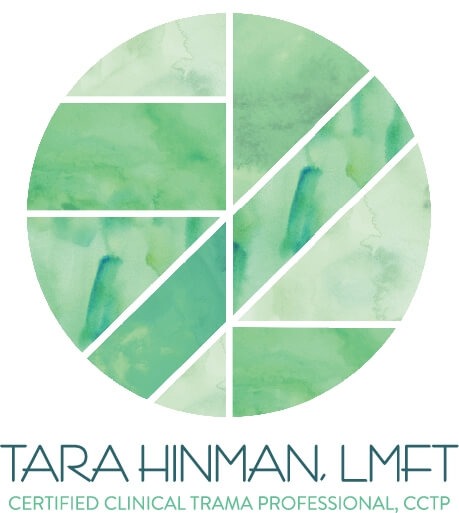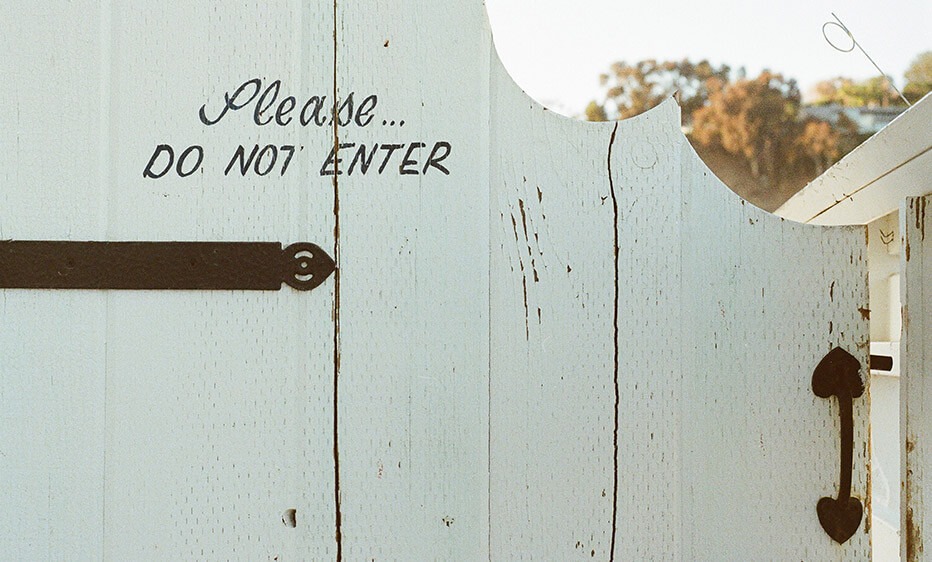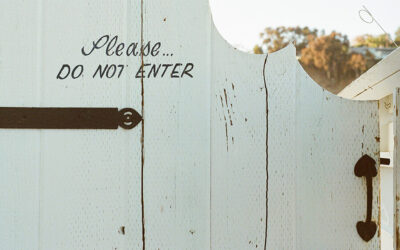Where’s Your Zipper?
That’s an odd question… what do you mean, where is my zipper? We’ll get to that in a moment.
With the holidays upon us, I thought this an opportune time to get into the business of establishing and maintaining our personal boundaries. So, what is a boundary exactly? Mr. Webster defines a boundary as “something that indicates bounds or limits; a limiting or bounding line”. Synonyms include outline, perimeter, frame and extremity. As humans, it is where we end and “others” begin. What belongs to me, and what doesn’t belong to me is a helpful inquiry… what is my property and what is yours? Often times when working on boundaries, I will ask, “what does your boundary look like with (fill in the blank) person?” Frequently, the answer is confusion or “I’ve never thought about that”. Makes sense… after all, to my knowledge, there isn’t a course entitled Boundary-Setting 101, or What Belongs To Me. When we get to this point in a meeting, I will ask the person sitting across from me to describe what their boundary with the above-named person might look like; does it look like a tennis net, with large holes in it? Does it look like a thick wall of steel with no means of getting to the other side of it? Is it opaque, or can the other side be seen? Once a visual is established, they can then begin to discern if this is where they want their boundary to be, or does the boundary require a “remodel”?
Boundaries establish our property, according to Dr. Henry Cloud and Dr. John Townsend in their excellent book Boundaries. What do you mean, my property? It’s what I “own”… I own my time, I own my emotions, I own the physical space that I feel comfortable in. When I am able to establish my boundaries clearly, I feel better. When my boundaries are weak, fuzzy or non-existent, that is when I begin to feel the pinch. At that point, I am giving my property away, and it doesn’t feel good. Part of what I used to do (and honestly, still find myself struggling with at times) is giving my time away by saying “yes” to things that either I didn’t want to do, or didn’t have time to do. The “good Southern girl”… do I see a recognizing smile spreading across our collective lips ladies? Without the simple, yet sometimes difficult “no”, I have given my property away, and then I become resentful, which makes zero sense, as it is my responsibility to set and maintain my boundaries... why should I become resentful towards others, when it is clearly my responsibility to say “no”? Argh!
So where does the zipper come into play? Visualize if you will, a person, complete with a zipper. This zipper delineates what is outside of the person, and what is not. The zipper represents the boundary that has been established, however, here’s the trick: the zipper on the person who has established boundaries and then allows others to “take” their property, has the zipper pull on the outside. The same person who chooses to move the zipper pull to the inside now has control over their property… feels better, doesn’t it?
A final word about boundaries: they can be fluid and variable, and boundaries are not the same for each individual that is encountered. My boundary with Aunt Gertrude, with whom I have a good relationship and similar views on boundaries, may be pliable and transparent. I may chose to establish a boundary with my crazy neighbor that appears much like a stone wall, with a door in it that opens from my side (remember the zipper?).
As we move towards possible extended time with family, friends and others this time of year, it could be wise to consider what boundaries need to be in place, what emotional property we would like to keep, and be mindful that when we may begin to feel resentful and angry, perhaps we would do well to check our own zipper… after all, it belongs to us.
For further reading, check out this quick article on boundaries: Ten Ways To Build and Preserve Better Boundaries














